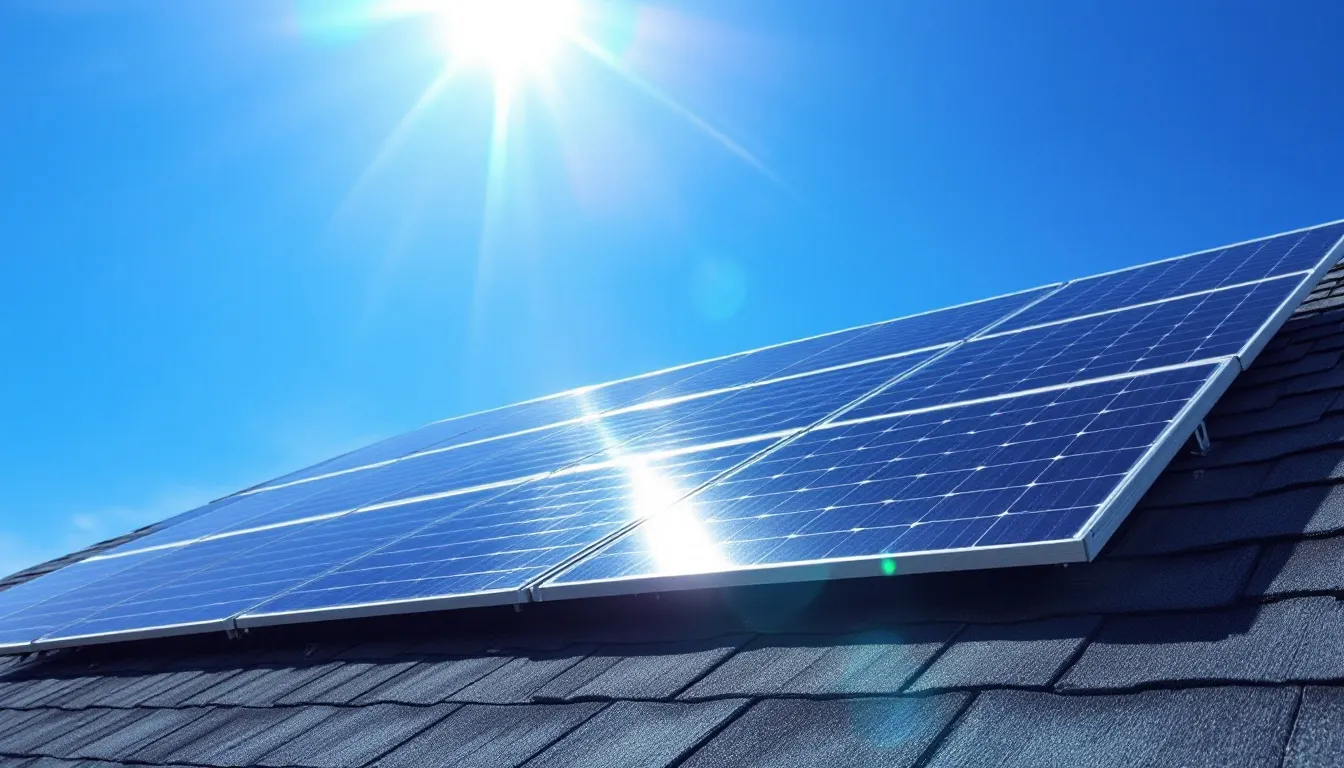Making the switch to solar energy is an exciting step toward energy independence and reducing your electricity bills. However, proper preparation is crucial for a smooth installation process and optimal system performance. This comprehensive guide will help Perth homeowners prepare their homes for solar panel installation, ensuring your solar journey starts on the right foot.

Understanding Your Solar System Requirements
Before your installation team arrives, it’s essential to understand what your Perth home needs for an effective rooftop solar system. The size solar system you require depends on several factors, including your electricity consumption, available roof space, and future energy needs.
Assessing Your Energy Usage
Start by examining your electricity bills from the past 12 months to understand your energy usage patterns. Most Perth households consume between 15-25 kWh daily, but this varies significantly based on:
- Number of occupants
- Pool and air conditioning usage during Perth’s hot summers
- Electric vehicle charging requirements
- Future energy needs such as potential EV chargers or battery storage
Your solar retailer will analyze your electricity usage to determine the right solar system size. A typical home solar system in Western Australia ranges from 6.6kW to 10kW, though larger systems are becoming more common as electricity use increases.

Roof Space Assessment and Preparation
Evaluating Available Roof Space
Your roof space is the foundation of your solar energy production. Perth homes are fortunate to receive excellent solar irradiance, making most rooftop solar installations highly effective. Here’s what to consider:
Roof Orientation and Pitch:
- North facing roofs provide optimal energy production in Perth
- East and west-facing sections can also be highly productive
- Avoid heavily shaded areas that will impact panel output
Roof Condition:
- Ensure your roof is structurally sound and can support the solar panels
- Address any leaks or damage before installation
- Consider roof age – if replacement is needed within 10 years, do it before installing solar panels
Available Space Calculation:
- Each solar panel typically requires 2 square meters
- A standard 6.6kW system needs approximately 35-40 square meters
- Leave space for roof access, vents, and safety clearances
Roof Preparation Checklist
Structural Requirements:
- Ensure your roof meets Australian standards for structural integrity
- Older Perth homes may need engineering assessment
- Clear any debris, moss, or accumulated dirt from roof surfaces
Access Considerations:
- Trim overhanging tree branches that might obstruct installation
- Ensure clear vehicle access for installation equipment
- Remove outdoor furniture or obstacles near the house
Electrical Infrastructure Preparation
Switchboard and Meter Readiness
Your home’s electrical infrastructure must support your new solar system. Most Perth homes built after 2000 have suitable electrical systems, but older properties may need upgrades:
Switchboard Assessment:
- Modern switchboards are required for safe solar installation
- Safety standards mandate appropriate circuit protection
- Older ceramic fuse boxes typically need replacement
Smart Meter Installation:
- Western Power may need to install a new smart meter for grid connection
- This process can take 2-4 weeks, so plan accordingly
- The smart meter enables proper feed in tariff calculations
Three-Phase vs Single-Phase:
- Larger solar systems may benefit from three-phase connections
- Discuss with your solar installer whether upgrades are cost effective
- Consider future needs like battery installation or EV chargers
Battery Storage Considerations
If you’re planning battery storage as part of your solar journey, prepare the installation location:
Location Requirements:
- Battery systems need ventilated, accessible areas
- Garage or dedicated utility areas work well in Perth’s climate
- Avoid locations exposed to extreme heat or moisture
- Ensure adequate space for battery installation and monitoring system access
Electrical Preparation:
- Additional electrical work may be required for battery solutions
- Plan cable routes from solar panels to battery location
- Consider future expansion when selecting battery system size
Financial and Administrative Preparation
Documentation and Permits
Ensure all necessary documentation is ready for your solar panel installation:
Required Documents:
- Property ownership documentation
- Council approvals (if required for your area)
- Electrical safety certificates
- Insurance policy details
Financial Preparation:
- Confirm solar rebate eligibility and applications
- Arrange payment methods with your solar installer
- Review electricity retailers and feed in tariff options
- Consider financing options if not paying upfront
Understanding Your Investment
A residential solar system represents significant financial benefits over its 25-year lifespan:
Cost Considerations:
- Factor in potential electricity use increases
- Consider future energy needs like electric vehicle charging
- Evaluate battery storage timing – now vs. future installation
Return on Investment:
- Solar systems typically pay for themselves within 4-6 years in Perth
- Rising electricity prices improve the financial benefits over time
- Greater energy independence reduces exposure to electricity bill increases
Home Environment Preparation
Creating Installation Access
Your installation team needs safe, efficient access to complete the solar installation:
Interior Access:
- Clear pathways to electrical panels and roof access points
- Protect furniture and valuables in work areas
- Ensure pets are secured during installation days
Exterior Preparation:
- Provide parking space for installation vehicles
- Clear garden areas around the house perimeter
- Secure outdoor furniture and decorations
Safety Considerations:
- Inform neighbors about installation timing
- Keep children and pets away from work areas
- Understand the installation timeline (typically 1-2 days for residential systems)
Perth-Specific Considerations
Climate Factors:
- Summer installations may start early to avoid extreme heat
- Consider seasonal energy production variations
- Plan for potential weather delays during winter months
Local Regulations:
- Understand Western Australia specific requirements
- Some Perth suburbs have heritage or covenant restrictions
- Check if your area requires additional council approvals
Technology Integration Planning
Smart Home Integration
Modern solar systems integrate seamlessly with smart home technology:
Monitoring Systems:
- Choose monitoring software that tracks system performance
- Many systems offer smartphone apps for real-time data
- Plan WiFi access for monitoring system connectivity
Future Technology:
- Consider EV charger placement and electrical requirements
- Plan for potential smart home energy management systems
- Evaluate integration with existing home automation
Energy Management Strategy
Load Management:
- Plan to shift electricity use to daylight hours when possible
- Consider appliance timer usage to maximize solar energy consumption
- Understand how excess energy feeds back into the grid
Usage Optimization:
- Pool pumps and hot water systems can run during peak solar production
- Washing machines and dishwashers work well on solar energy
- Air conditioning can be pre-cooled using solar power before evening peak times
Working with Your Solar Installer
Pre-Installation Communication
Maintain clear communication with your solar installer throughout the preparation process:
Questions to Ask:
- Detailed installation timeline and daily schedules
- Equipment specifications and warranty information
- Post-installation support and monitoring services
- System performance expectations for your specific roof and location
Installation Day Preparation:
- Confirm installation team arrival times
- Understand what work happens inside vs. outside your home
- Know who to contact for questions or concerns during installation
Quality Assurance
Safety Standards Compliance:
- Ensure all work meets Australian standards
- Verify proper electrical connections and earthing
- Confirm grid connection testing procedures
Documentation Handover:
- System specifications and performance expectations
- Warranty documentation for panels, inverters, and installation
- Monitoring system access and training
- Maintenance requirements and schedules
Long-Term Success Planning
Ongoing Maintenance
While solar panels require minimal maintenance, proper planning ensures optimal performance:
Regular Monitoring:
- Check system performance monthly using monitoring software
- Watch for unusual drops in energy production
- Keep installation documentation accessible
Professional Services:
- Schedule annual system health checks
- Plan for inverter replacement after 10-15 years
- Consider professional cleaning in dusty areas of Perth
Future Expansion
System Scalability:
- Discuss expansion options with your installer
- Consider conduit and electrical capacity for future additions
- Plan mounting systems that allow for additional panels
Technology Upgrades:
- Battery storage can often be added later
- EV chargers integrate well with existing solar systems
- Smart energy management systems continue to improve
Conclusion
Proper preparation is the foundation of a successful solar installation. By following this comprehensive guide, Perth homeowners can ensure their solar journey begins smoothly and their solar system delivers maximum energy production and financial benefits.
Remember that many systems installed today will operate for 25+ years, so investing time in proper preparation pays dividends throughout your system’s life. Work closely with experienced solar installers who understand Perth’s unique conditions and can guide you through each step of the process.
Your investment in solar energy represents more than just reduced power bills – it’s a step toward greater energy independence, reduced carbon footprint, and protection against rising electricity prices. With proper preparation, your rooftop solar system will provide reliable, clean energy for decades to come.
For comprehensive information about solar power in Perth, including local considerations and benefits, visit our Perth homeowner’s guide to solar power.
Ready to start your solar journey? Contact Vista Electrical Controls for a comprehensive assessment of your Perth home’s solar potential. Our experienced team will guide you through every step, from initial planning to smooth installation and beyond.
